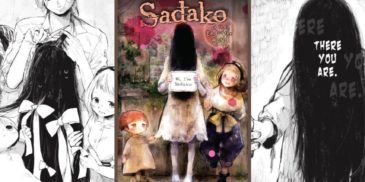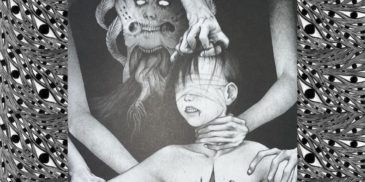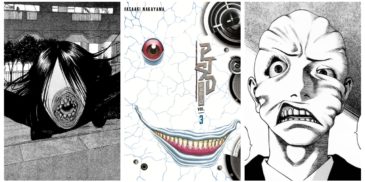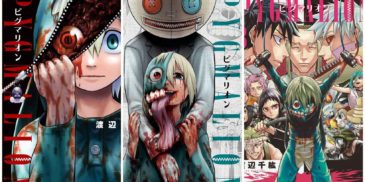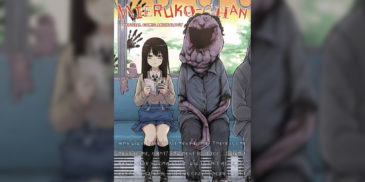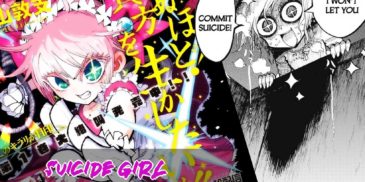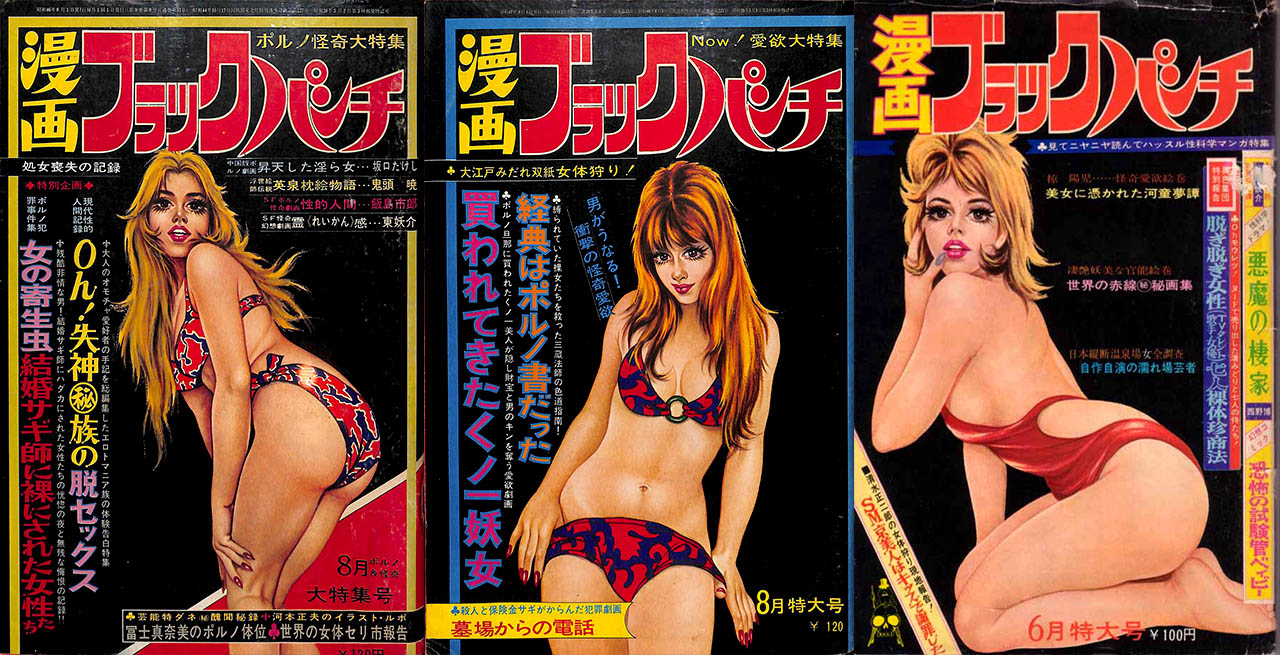
After contributing to periodical manga magazines such as Manga OK in the mid-60s, the ever-ambitious Taro Bonten would decide to create his own bespoke gekiga magazine in 1969 named Black Ace. However, this wouldn’t be just any normal magazine and would seek to recreate the mystery genre started by kasutori magazines in the late 1940s. Kasutori magazines were best known for a mix of eroticism, surrealism, and horror in a single issue, creating a very weird vibe referred to as “mystery” – perhaps taking its name from the titles of popular kasutori publications such as Mysterious Magazine and Bizarre.
After lengthy development and fundraising, Black Ace’s first issue was published in September 1969. Clearly seeing the potential in such a niche format, the competition wasn’t far behind. This competitiveness came in the form of Black Punch whose first issue was published just a month later in October 1969. Despite its popularity and winning the “Gekiga/Manga Rookie of the Year Award”, Black Ace never quite managed to overcome its independent handicap and ceased publication after just ten monthly issues. Black Punch, on the other hand, was published by Nichibunsha and, as such, had a dedicated distribution network – something that Black Ace was never really able to secure. Eventually running for a total of thirty issues, Black Punch managed to totally dominate the early 70s horror manga market without any real competition.
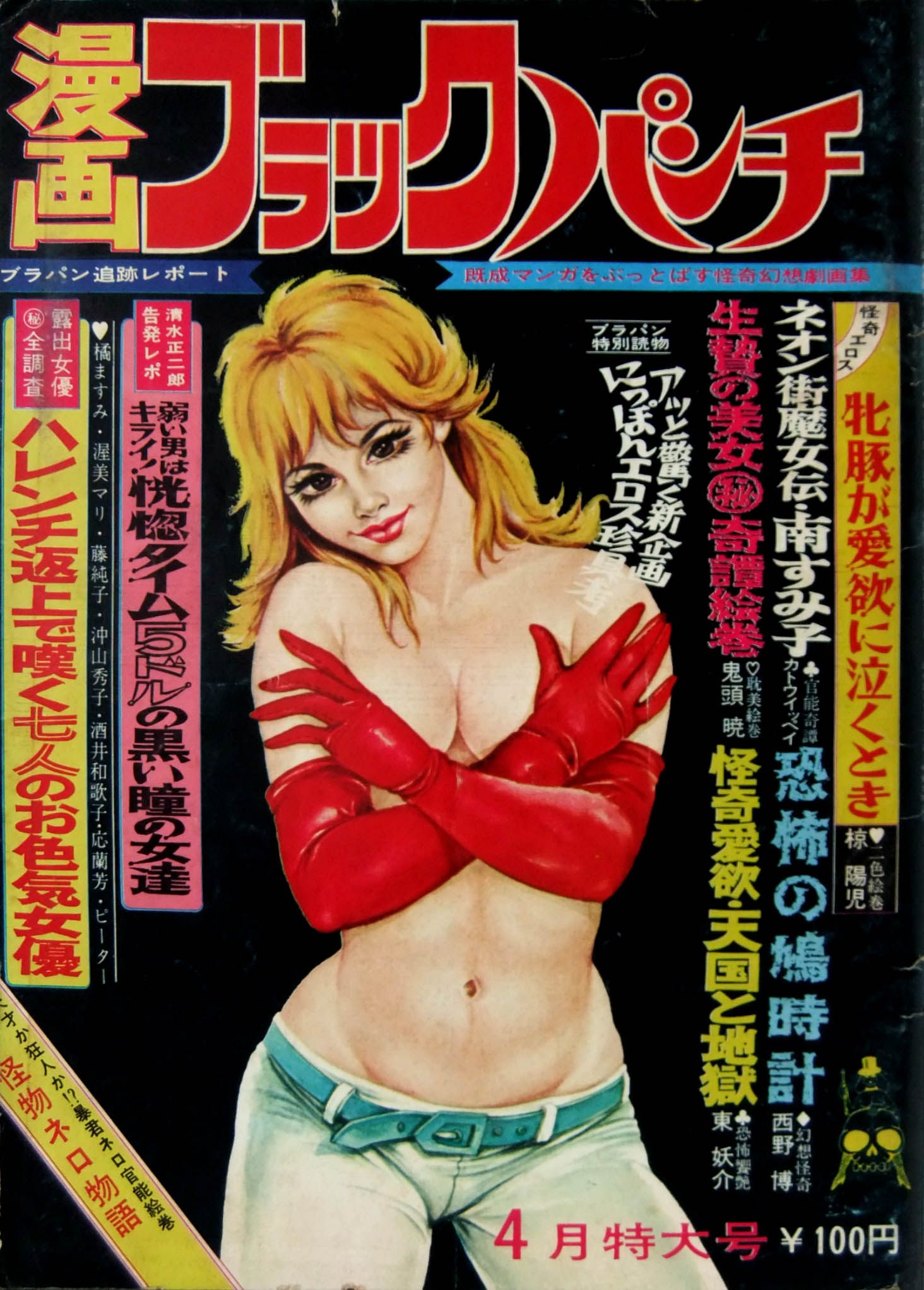
Although the two magazines have their similarities, it would certainly be unfair to accuse Black Punch of copying Black Ace. Even though Black Ace included a fair amount of horror manga, it was first and foremost a mystery magazine that focused on a variety of topics and mediums. Black Punch, whilst sharing some of Black Ace’s inspirations, was dedicated almost entirely to horror manga. Even though it had market dominance, horror was still a notoriously difficult genre to sell to the masses with horror artist Kanako Inuki mentioning recently that even Shigeru Mizuki struggled to get their manga GeGeGe no Kitaro (possibly one of the most famous and popular horror manga ever created) published in magazines. As such, issues of Black Punch are extremely hard to come by nowadays. Fortunately, I’ve been lucky enough to get my hands on a copy of the fifth issue so we can take a closer look at just why Black Punch succeeded where others failed.
At first glance, Black Punch looks like your typical 70s manga magazine with a sexy mascot standing front and centre. The covers for all thirty issues were drawn by Taro Yamamoto – a prolific cover artist in the 1960s and 70s who often contributed to more mainstream magazines such as Comic Ace and Comic VAN. However, there’s a subtle difference between this and other manga magazines at the time which alludes to its mystery genre origins. A sexy model on a black background with a red title and article lists in bold salacious colours were all synonymous with your typical dirty “true story” magazine. Initially formed as a subgenre in the kasutori magazine era, true story magazines would take on a life of their own through the 1950s and 60s relying on often sordid tales of everyday weirdness and scandal. The aesthetic may seem insignificant now, but to readers at the time such a cover would have quickly drawn their attention and informed them absolutely of what tone to expect of the magazine.
When Sows Cry is the first story in this issue and comes from S&M artist Yoji Muku in a rare departure from his typical realistic fetish artwork. It is a devilishly twisted moral tale with just a hint of perversion running through. The title is also a play on words: technically “牝豚” (mesubuta) means female pig, but “雌豚” (mebuta) is the commonly used word. Mesubuta is instead reserved as a particularly cruel synonym for “slut” (the closest literal translation in this context is “cuntpig”) and is mainly used in the BDSM community.
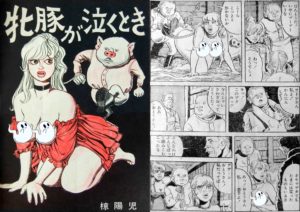
Kyoko is the spoilt daughter of a pig farmer who treats other people with almost as little respect as the pigs themselves. After an encounter with the ugly and rather pig-like farmhand Futoshi who attempts to flirt with her, she savagely mocks him before laughing in his face and kicking a poor pig for her own sadistic amusement. That night, as she gets ready for bed, she feels compelled to tie her hair in pigtails. After she falls asleep, she has the most bizarre dream where she marries Futoshi, and on their wedding night after making love, his face suddenly transforms into that of a pig’s. Waking in fright, she finds that she is no longer in her bed, but inside the stable – totally naked and surrounded by pigs. It is not long before someone comes to the stable, but unbelievably Kyoko is left staring back at a doppelgänger of herself. In a bizarre turn of karmic justice, Kyoko has somehow swapped places with a pig, who now occupies her body. She tries to talk but all that can be heard is oinking. It is not long before Futoshi and her father appear, but they do not recognise her; for some reason all they see before them is a pig! The porcine imposter is quick to convince Futsohi and Kyoko’s father to take “the pig” to market the very same day so she can take over her life. As Kyoko is tied and thrown in the back of her father’s truck, the imposter settles into a new life with Futoshi who is unaware of his new lover’s curly-tailed secret.
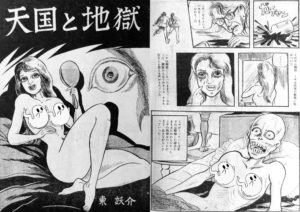
Heaven and Hell is surprisingly similar to the 1968 Peter Cushing film Corruption (which itself was loosely inspired by the French horror classic Eyes Without a Face). When Michi, a spectacularly ugly girl, stops to help an elderly surgeon who is slumped at the side of the road, he offers to help her become beautiful out of gratitude. The operation is a resounding success and the girl is not only given movie star looks, but the body to match them. Attention from the opposite sex quickly follows, much to Michi’s delight, and she ends up becoming an exotic dancer with a string of lovers. The surgeon feels forgotten and abandoned by Michi who only comes to him now for her post-op injections. After accidentally walking in on her with an older lover, he begins to resent her and disapproves of her new lifestyle of cavorting with men whom he deems inappropriate. After he has a jealous confrontation with her new gangster boyfriend, the boyfriend stabs him and the bottle of medicine is broken as he falls to the ground. After a few days without her regular injections, sores begin to form on Michi’s face and it is not long before her beauty rots away… along with her flesh.
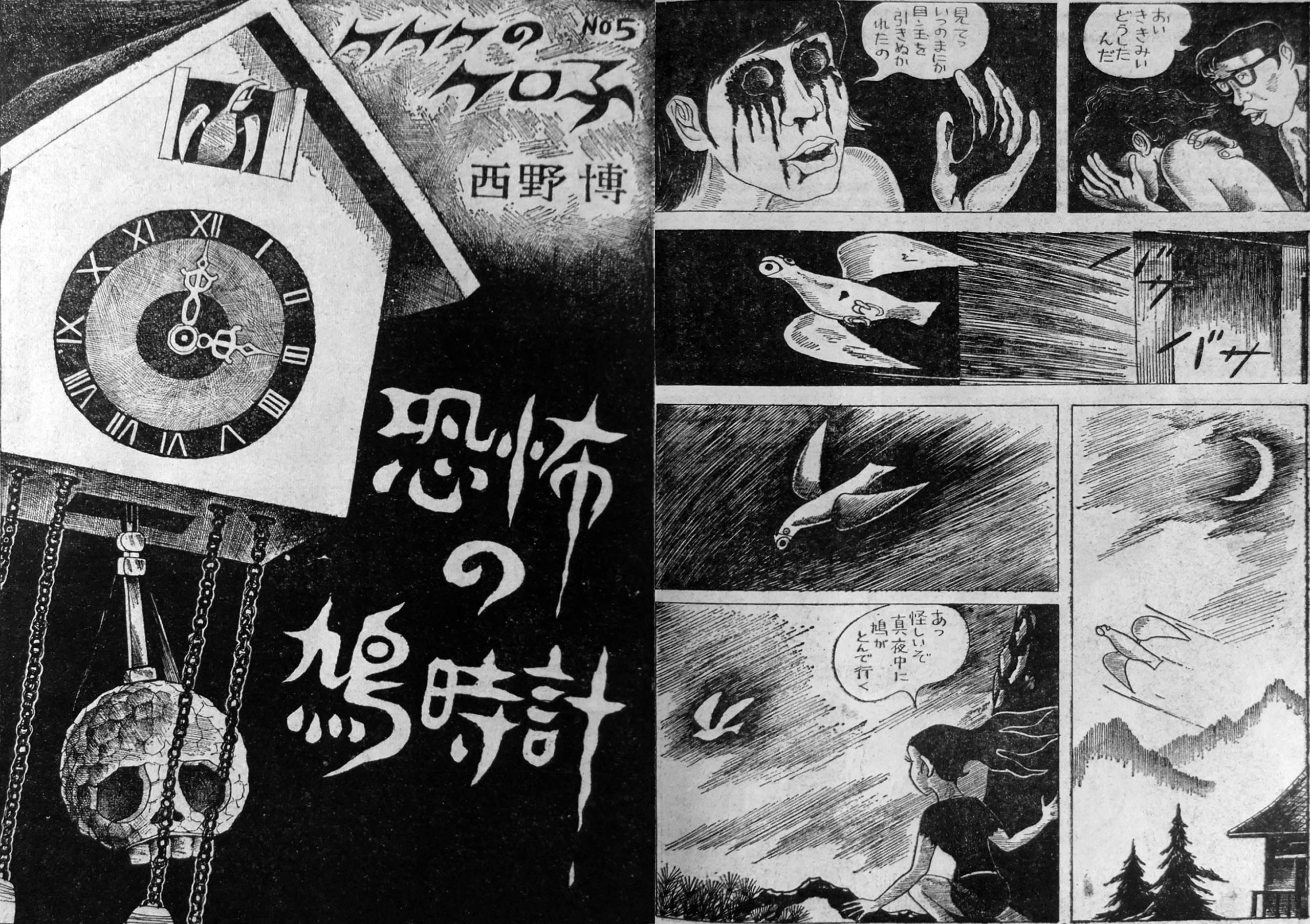
Terrifying Cuckoo Clock is not especially gory, nor is the story particularly complex. However, with Hiroshi Nishino’s signature dark art style, it takes on a haunting almost dreamlike atmosphere and is probably the most frightening story in this issue of Black Punch; much like a Grimm’s fairytale, the horror lies in the overall gruesome creepiness. When your cuckoo clock has a pendulum shaped like a skull it might be wise to think twice before hanging it on your wall. Unfortunately for one couple, they did not take heed, and when the clock strikes 3 AM, the cuckoo takes flight from its enclosure and pecks out the girlfriend’s eyes. An onlooker is surprised to see a cuckoo so late at night so she follows it as it flies through the night sky with the eyeballs in its beak. Eventually, it flies into a cave where a ghoulish old man has been collecting hundreds of peoples’ eyes to put into the sockets of some strange eyeless girl he has living with him. When this latest set of eyes cause her to see things upside-down, he makes no hesitation to try and steal more. Fortunately, it turns out that the cuckoo is actually remote controlled and the woman is able to take control of it and tear out one of the man’s eyes before chasing him away.
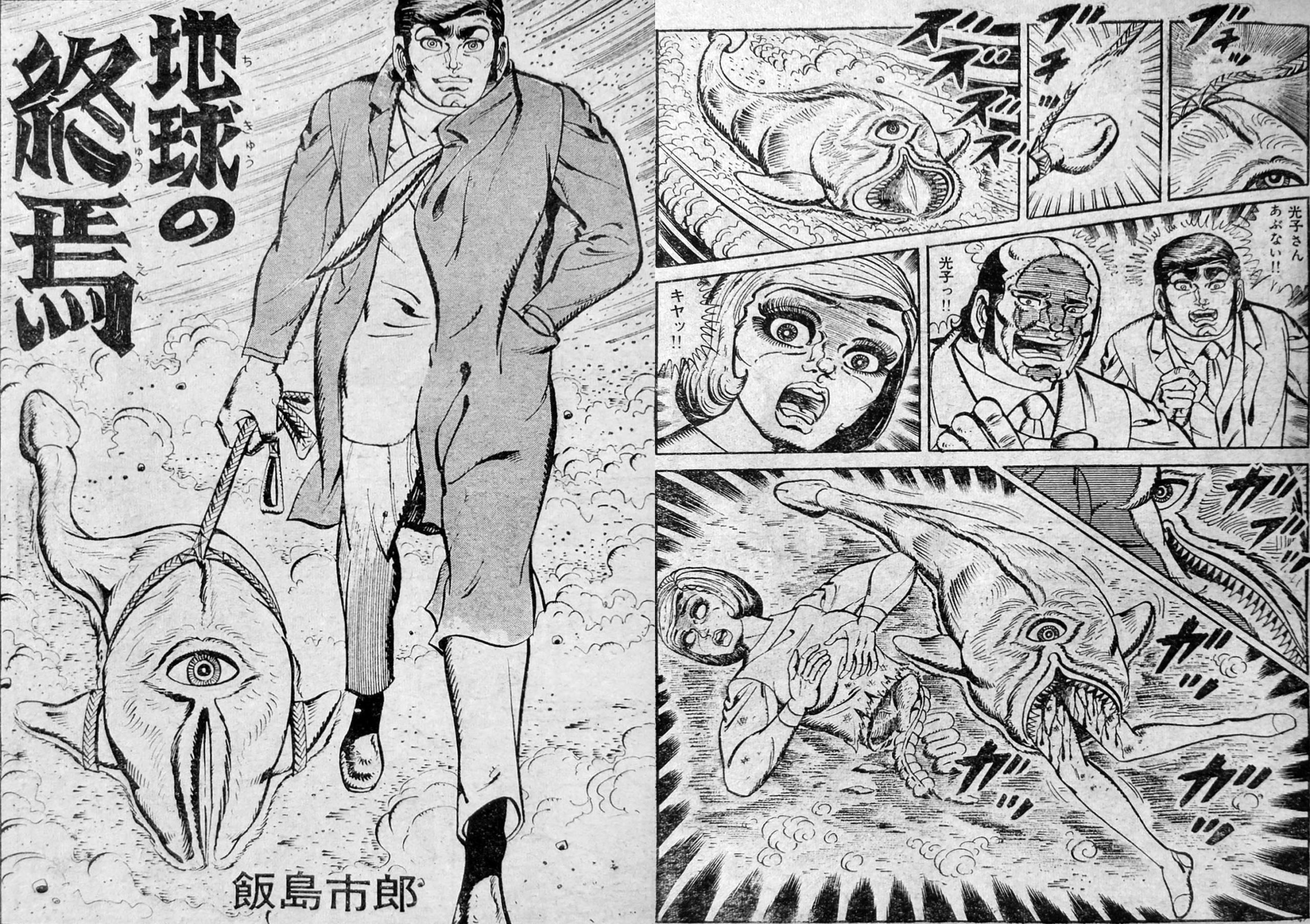
Black Punch is probably best known for publishing the works of Ichiro Iijima, with his stories appearing in practically every single issue. The Iijima story in this issue is titled End of the World and is a gruesome, almost Lovecraftian, horror with absolute bucketfuls of dismemberment and gore. When an alien-like sea creature is caught by some children at the beach, a man who is driving past takes it from them to show to his scientist friend. After some initial examination at the lab, the creature is able to survive on dry land and even appears to be quite placid – even friendly. The man decides to walk it on a lead but events quickly take a turn for the worst when it encounters a dog that seemingly recognises it as a threat. Almost instantly, the creature attacks the dog, savagely tearing it apart and devouring it. Later that night, the creature spontaneously duplicates; a process that continues every time it feeds. Horrified by the ferocity of the creature, they decide it best to kill it. Despite their best efforts, the creature appears to be indestructible, and after failing to crush it with a hydraulic press, the creature breaks free of its bonds and devours the lab technician. With a taste for human flesh and the ability to multiply in a matter of hours, the earth is soon overrun by bizarre monsters.
All three volumes of Ichiro Iijima’s collected Black Punch works have recently been reprinted and can be ordered from Taco Ché
More Manga Reviews
Sadako at the End of the World balances delicately between a cute slice-of-life story and a new entry into the Ring franchise that holds up as true canon. Featuring supervision… Gaia is a strikingly gorgeous and demented release from new mangaka Asagi Yaenaga, who is transitioning from their expressive and violent art pieces into the realm of narrative storytelling. The… Recently, disturbing news regarding Masaaki Nakayama, a horror manga author known for his manga Fuan no Tane (2013), has been circulating online. According to many social media posts, he has… Pygmalion is a gory horror manga consisting of three volumes released in 2015 and concluding in 2017, written and illustrated by Chihiro Watanabe. Watanabe is known as the creator of… Mieruko-chan Anthology Comic is a 2023 compendium of short, one-shot manga based around the characters of Tomoki Izumi’s popular supernatural manga/anime Mieruko-chan. The anthology features work from Yousuke Katayama, Shuu… Suicide Girl is an ongoing action horror magic girl manga, written and illustrated by Atsushi Nakayama. Atsushi is best known as the creator/illustrator of Uratarou, The Zombie Maria, Nejimaki Kagyu,…Sadako at the End of the World Manga Review – Like a Ray of Hope During the Apocalypse
Gaia (2022) Manga Review – A Deviously Dark Debut Horror Manga
PTSD Radio (2010) Manga Review – When reality meets fiction (sort of)
Pygmalion (2015) Manga Review – It’s All Greek To Me
Mieruko-chan Anthology Comic (2023) Manga Review – An Official Collection of One-Shots
Suicide Girl (2020) Manga Review – Dark-Humoured Magic Girl Manga

Hi, I have a borderline obsession with Japanese showa-era culture with much of my free time spent either consuming or researching said culture. Apparently I’m now writing about it as well to share all the useless knowledge I have acquired after countless hours surfing the web and peeling through books and magazines.
